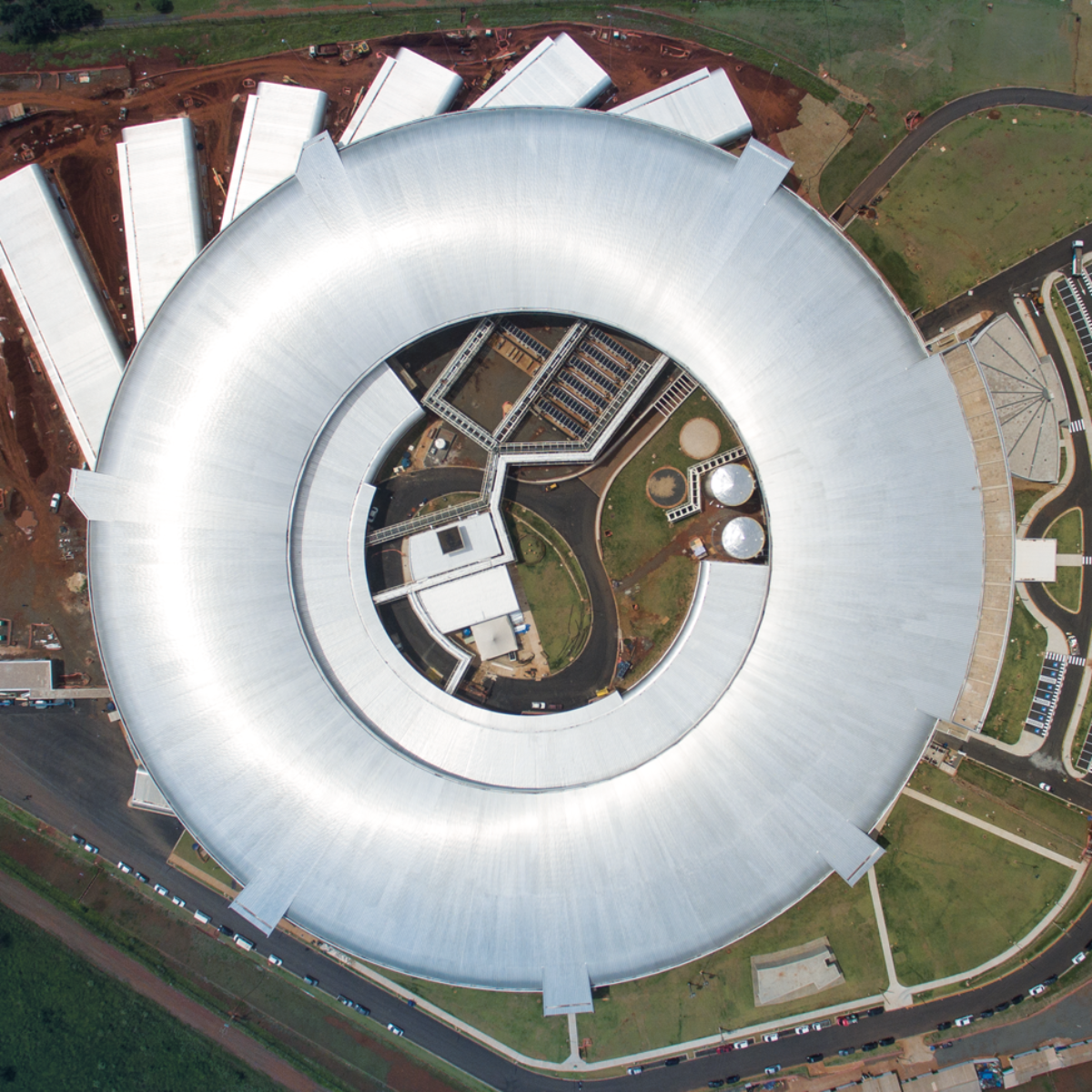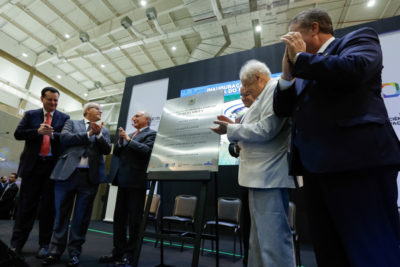
New Synchrotron Light Source is the largest and most complex research structure ever buit in Brazil
The Brazilian President, Michel Temer, and the Minister of Science, Technology, Innovation and Communications, Gilberto Kassab, participated last Wednesday (14th) in the ceremony commemorating the first stage of the new Brazilian Synchrotron Light Source, Sirius, in the Brazilian Center for Research in Energy and Materials (CNPEM), in Campinas (SP). Started in 2012, Sirius is the largest project in Brazilian science, a state-of-the-art research infrastructure, strategic for cutting-edge scientific research and for finding solutions to global problems in areas such as health, agriculture, energy and the environment.

(Campinas – SP, 11/14/2018) The Brazilian President, Michel Temer and the authorities present unveil the commemorative plaque of the first stage of the Sirius Project.
Photo: Cesar Itiberê
This first stage includes the conclusion of the construction works of the building that houses the entire research infrastructure, in addition to the assembly of the Linear and Booster Accelerators. The Storage Ring is currently being assembled.
The delivery of the next stage of the project, scheduled for the second half of 2019, includes the start of the Sirius operation and the opening of the first six beamlines for researchers. The complete project includes seven other beamlines, expected to be opened in 2021. However, the number of beamlines can be gradually expanded, reaching up to 40 experimental stations.
Sirius will be housed in a 68,000-square-foot building, designed and built to meet unprecedented mechanical and thermal stability standards.
Budgeted at BRL 1.8 billion, the Sirius project is funded by the Ministry of Science Technology, Innovation and Communications (MCTIC). So far, about BRL 1.12 billion has been passed on to the project, BRL 282 million of which in 2018.
Designed by Brazilians, Sirius has so far had about 85% of its resources invested in Brazil, in partnership with national companies. In addition to civil construction, contracts were signed with more than 300 small, medium and large companies, of which 45 are directly involved in technological developments, in partnership with LNLS and CNPEM.
Work is related to the detectors for new Brazilian synchrotron light source, Sirius
French physicist was Director-General of the largest European synchrotron between 1993 and 2001 and LNLS' Scientific Director from 2009 to 2013